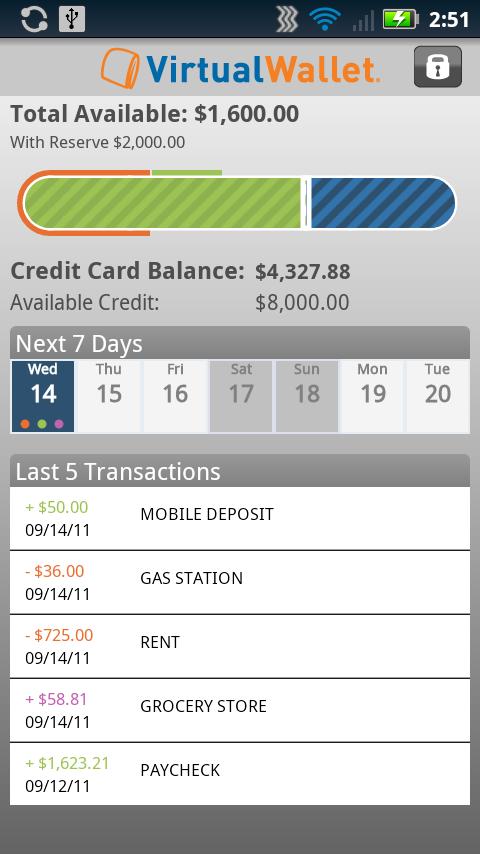
It can be extremely convenient to have a bank account while at school. A student account is a great way to help students manage their financial affairs. PNC offers three types of student accounts: the PNC Student Savings account, the PNC Student Checking account and the PNC Foreign Currency Account. It is easy to see why these types of accounts are useful. Here are some of its benefits.
PNC Bank
If you're still in college, open a PNC Bank account for students. This account is free and offers a range of perks, including a linked debit card and free outgoing wire transfers. You will need to buy your own checks if you are already enrolled in college. This is an option that you can consider if you aren't interested in having a bank account throughout your entire life.
PNC Bank student accounts don't have a minimum balance requirement or overdraft fees. There's also no ATM fee or overdraft fee, which means you'll still have a decent balance even after you graduate. Cash back is also available on purchases up to $3,000 per month made with your debit card. That's $360 per annum! It doesn’t get any better than this!

U.S. Bank
U.S. Bank PNC student account has no minimum balance requirement and is available in 19 states. Its virtual Wallet With Performance Spend checking account pays 0.1% APY when you have balances more than $2,000 You must make two direct deposits monthly to your account in order to be eligible. This account offers you more forgiveness of fees than basic checking. The account is available for up 4 ATM transactions. There is a maximum $10 statement period.
When choosing a bank, choose the features you want to use most. If you plan to keep your money in an account for several years, look for a low minimum balance. Saving money is also possible by choosing a convenient bank with no ATM fees. Make sure you choose a bank offering the best rates. This will ensure you get the best rates and features, as well as a bank that doesn't have an annual fee. You will be happy you did.
Bank of America
PNC Student accounts might be the best choice for students who are looking for a checking or savings account. This account allows you to access a range of banking products including a student checking and Reserve account that earns interest, as well as a high-yield savings account called Growth. The Reserve account allows you to save for the short term, while your Spend account acts like your primary checking account. The Growth Account helps you to achieve long-term goals in savings.
Students can learn money management with the Bank of America PNC StudentAccount. This account is safe and secure, but also allows them to save safely. This account is a good choice for students, as it offers no monthly maintenance fee and no annual fee. It is also free for those under the age of 24. Students can earn rewards by maintaining their bank account balances over a set amount through the Bank's Preferred Reward program.

Bank of Canada
If you are studying abroad, a student account could be the perfect option. These accounts come with lots of perks and bonuses and some Canadian banks even have special welcome offers for new customers. Student bank accounts offer security and protection. CDIC banks will offer you the best protection. While you don't necessarily need to open an account at a CDIC bank to establish credit, having one can help you build a solid credit record that will be beneficial when applying for loans and mortgages. You may also be eligible for student credit cards.
Canadian banks offer student account options. We have also looked at some regional banks like the Laurentian Bank or Canadian Western Bank. We also looked into a few online-only institutions like Simplii Financial and Tangerine. These accounts have different requirements, but all offer student banking options. They are also free to open so you don't have to worry about anything. You should check the minimum balance, interest rates and other requirements before opening an account.
FAQ
What type of investment vehicle should i use?
You have two main options when it comes investing: stocks or bonds.
Stocks represent ownership interests in companies. Stocks are more profitable than bonds because they pay interest monthly, rather than annually.
If you want to build wealth quickly, you should probably focus on stocks.
Bonds offer lower yields, but are safer investments.
You should also keep in mind that other types of investments exist.
They include real-estate, precious metals (precious metals), art, collectibles, private businesses, and other assets.
Do I require an IRA or not?
An Individual Retirement Account (IRA), is a retirement plan that allows you tax-free savings.
You can make after-tax contributions to an IRA so that you can increase your wealth. They provide tax breaks for any money that is withdrawn later.
For self-employed individuals or employees of small companies, IRAs may be especially beneficial.
In addition, many employers offer their employees matching contributions to their own accounts. This means that you can save twice as many dollars if your employer offers a matching contribution.
What should I look for when choosing a brokerage firm?
Two things are important to consider when selecting a brokerage company:
-
Fees – How much commission do you have to pay per trade?
-
Customer Service - Do you have the ability to provide excellent customer service in case of an emergency?
A company should have low fees and provide excellent customer support. This will ensure that you don't regret your choice.
Statistics
- Over time, the index has returned about 10 percent annually. (bankrate.com)
- An important note to remember is that a bond may only net you a 3% return on your money over multiple years. (ruleoneinvesting.com)
- As a general rule of thumb, you want to aim to invest a total of 10% to 15% of your income each year for retirement — your employer match counts toward that goal. (nerdwallet.com)
- Most banks offer CDs at a return of less than 2% per year, which is not even enough to keep up with inflation. (ruleoneinvesting.com)
External Links
How To
How to invest stocks
Investing can be one of the best ways to make some extra money. It is also considered one of the best ways to make passive income without working too hard. There are many options available if you have the capital to start investing. It's not difficult to find the right information and know what to do. This article will guide you on how to invest in stock markets.
Stocks can be described as shares in the ownership of companies. There are two types if stocks: preferred stocks and common stocks. The public trades preferred stocks while the common stock is traded. Public shares trade on the stock market. The company's future prospects, earnings, and assets are the key factors in determining their price. Investors buy stocks because they want to earn profits from them. This process is known as speculation.
There are three main steps involved in buying stocks. First, determine whether to buy mutual funds or individual stocks. Second, select the type and amount of investment vehicle. The third step is to decide how much money you want to invest.
Choose whether to buy individual stock or mutual funds
For those just starting out, mutual funds are a good option. These mutual funds are professionally managed portfolios that include several stocks. You should consider how much risk you are willing take to invest your money in mutual funds. Some mutual funds carry greater risks than others. If you are new or not familiar with investing, you may be able to hold your money in low cost funds until you learn more about the markets.
If you prefer to make individual investments, you should research the companies you intend to invest in. Check if the stock's price has gone up in recent months before you buy it. It is not a good idea to buy stock at a lower cost only to have it go up later.
Choose Your Investment Vehicle
After you have decided on whether you want to invest in individual stocks or mutual funds you will need to choose an investment vehicle. An investment vehicle simply means another way to manage money. For example, you could put your money into a bank account and pay monthly interest. Or, you could establish a brokerage account and sell individual stocks.
You can also establish a self directed IRA (Individual Retirement Account), which allows for direct stock investment. Self-directed IRAs can be set up in the same way as 401(k), but you can limit how much money you contribute.
Your needs will determine the type of investment vehicle you choose. Are you looking to diversify, or are you more focused on a few stocks? Are you seeking stability or growth? How familiar are you with managing your personal finances?
The IRS requires that all investors have access to information about their accounts. To learn more about this requirement, visit www.irs.gov/investor/pubs/instructionsforindividualinvestors/index.html#id235800.
Calculate How Much Money Should be Invested
It is important to decide what percentage of your income to invest before you start investing. You can save as little as 5% or as much of your total income as you like. The amount you choose to allocate varies depending on your goals.
If you are just starting to save for retirement, it may be uncomfortable to invest too much. On the other hand, if you expect to retire within five years, you may want to commit 50 percent of your income to investments.
It is important to remember that investment returns will be affected by the amount you put into investments. So, before deciding what percentage of your income to devote to investments, think carefully about your long-term financial plans.